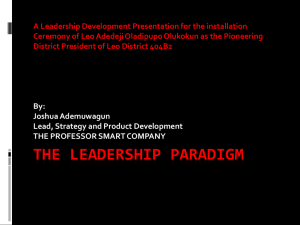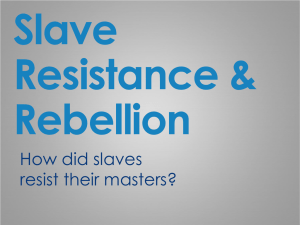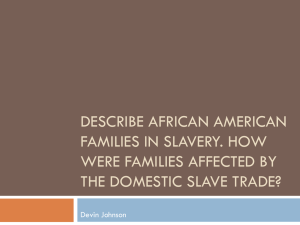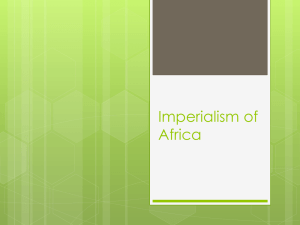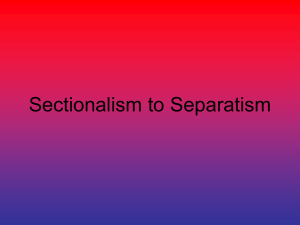Read more about the topic
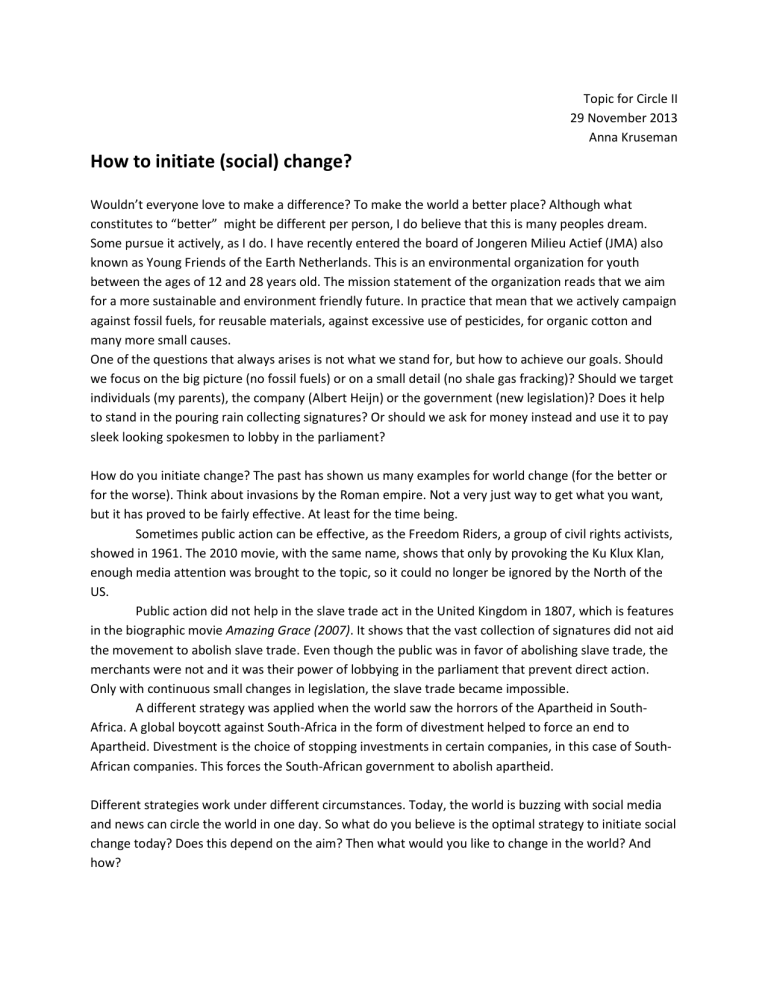
Topic for Circle II
29 November 2013
Anna Kruseman
How to initiate (social) change?
Wouldn’t everyone love to make a difference? To make the world a better place? Although what constitutes to “better” might be different per person, I do believe that this is many peoples dream.
Some pursue it actively, as I do. I have recently entered the board of Jongeren Milieu Actief (JMA) also known as Young Friends of the Earth Netherlands. This is an environmental organization for youth between the ages of 12 and 28 years old. The mission statement of the organization reads that we aim for a more sustainable and environment friendly future. In practice that mean that we actively campaign against fossil fuels, for reusable materials, against excessive use of pesticides, for organic cotton and many more small causes.
One of the questions that always arises is not what we stand for, but how to achieve our goals. Should we focus on the big picture (no fossil fuels) or on a small detail (no shale gas fracking)? Should we target individuals (my parents), the company (Albert Heijn) or the government (new legislation)? Does it help to stand in the pouring rain collecting signatures? Or should we ask for money instead and use it to pay sleek looking spokesmen to lobby in the parliament?
How do you initiate change? The past has shown us many examples for world change (for the better or for the worse). Think about invasions by the Roman empire. Not a very just way to get what you want, but it has proved to be fairly effective. At least for the time being.
Sometimes public action can be effective, as the Freedom Riders, a group of civil rights activists, showed in 1961. The 2010 movie, with the same name, shows that only by provoking the Ku Klux Klan, enough media attention was brought to the topic, so it could no longer be ignored by the North of the
US.
Public action did not help in the slave trade act in the United Kingdom in 1807, which is features in the biographic movie Amazing Grace (2007). It shows that the vast collection of signatures did not aid the movement to abolish slave trade. Even though the public was in favor of abolishing slave trade, the merchants were not and it was their power of lobbying in the parliament that prevent direct action.
Only with continuous small changes in legislation, the slave trade became impossible.
A different strategy was applied when the world saw the horrors of the Apartheid in South-
Africa. A global boycott against South-Africa in the form of divestment helped to force an end to
Apartheid. Divestment is the choice of stopping investments in certain companies, in this case of South-
African companies. This forces the South-African government to abolish apartheid.
Different strategies work under different circumstances. Today, the world is buzzing with social media and news can circle the world in one day. So what do you believe is the optimal strategy to initiate social change today? Does this depend on the aim? Then what would you like to change in the world? And how?





